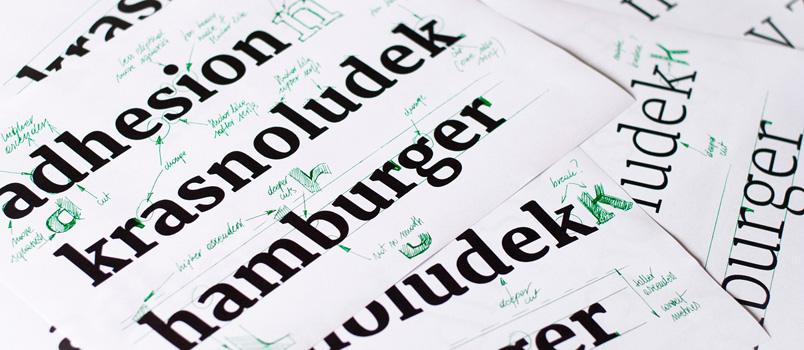Fonts can have an important role as a design element in your artwork. The right font will deliver the right message and impression to the audience. There are thousands of font selections you can find online. You should have some understanding of the basic font types before you download fonts for use in your project.
1. Serifs
Serif font is a classic font named for the little feet on the top and bottom of the letter characters. Serif font was invented in the Romans era and became well known in the 15th century. Some of the examples of serif fonts are Times New Roman, Georgia, and Garamond. You can see this font style commonly in books, newspapers, and logos. It is considered to be the most trusted font in the world. It has a plain and simple style, making it easy for the eyes to read. So, if you are choosing a font that is easy to read, you can choose a serif font. Serif is the perfect font for establishing the identity of the brand. It is suitable for use in editorials and finance fields.
2. Slab Serifs
Slab serifs are larger serifs that frequently appear on billboards, posters, and pamphlets in the 1800s. Slab serifs are designed to be used for shouting a message to the audience in the distance. They have larger and block-like feet. Usually, this type of font is well spaced making it look rounded and angular. Some of the slab serif fonts resemble the typewriter style. You can find a rugged character in this type of font. So, if you have an outdoor brand, you can use slab serif font in the logo design. Popular brand names that use slab serifs in their logos are Honda and Volvo. They convey a message of confidence and dependability.
3. Sans Serifs
Sans serifs fonts have no little feet on top and bottom of the letters like serifs fonts. In the 19th century, it was not that popular. However, nowadays, they are widely used in websites, brochures, and modern logo designs. Some of the examples of san serif fonts are Futura, Helvetica, and Arial. Sans serif fonts have a bossy appearance and stand out in large titles. It is also the type of font used for projecting information on the digital screen.
4. Script Fonts
Script fonts are a type of handwriting font that is curved. It is designed to mimic calligraphy handwriting. The two main types of script fonts are formal and casual script fonts. Formal script fonts have over-the-top curls. Casual script fonts have lesser swashes and are suitable for use in casual design jobs. Script fonts are often used in the invitation card for weddings and valentine’s day. They can add a touch of elegance and sophistication to your design.
5. Handwritten Fonts
Handwritten fonts do not have a fixed structure as their style is to mimics the flow of natural handwriting. They are full of character and can be used to make a statement for certain brand logos. You need to make sure that the character of the handwritten font matches your brand before using it. Handwritten fonts are suitable for brands that sell children’s goods, charity organizations, fashion, and photographers. Handwriting retro fonts can convey a casual and elegant atmosphere which makes it suitable for use on the invitation card. It is important to choose a handwritten font that is legible and easy to read on a mobile device.
6. Decorative Fonts
Decorative fonts, also known as display fonts, are designed for use as greeting cards and posters. They can also be edited in a font editor and used in a logo. Decorative fonts are not suitable if you want the text size to be 14 points or smaller. At 14 points or smaller, it is hard for people to observe the elements that make the font style decorative. When you are using decorative fonts, you want to avoid setting them all in uppercase as it will make them unattractive to read. It is hard for decorative letters to flow together when they are in the upper case. For the best result, you should set the size of the decorative fonts to be 32 points and larger.


